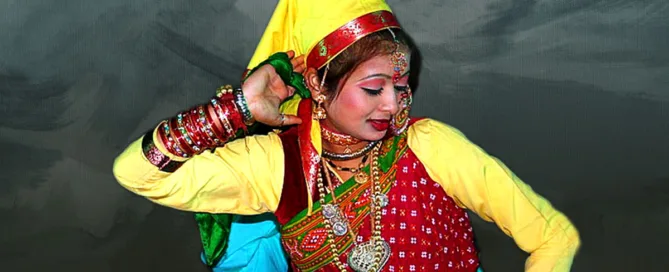Barada Nati
Barada Nati is a well-known traditional dance from Uttarakhand, a state in northern India. It is a well-known folk dance from the Jaunsar Bhawar region of Tehsil Chakrata in the Dehradun district. It is presented throughout a variety of festive occasions and social gatherings. The dance is typically performed in the evening before some religious festivals or at social gatherings. A group of 12 to 16 persons, both men and women, perform it while moving in a circular motion to a rhythmic beat. The dancers dress in traditional clothing, which includes vibrant skirts and shirts for women and dhoti-kurta for males.



